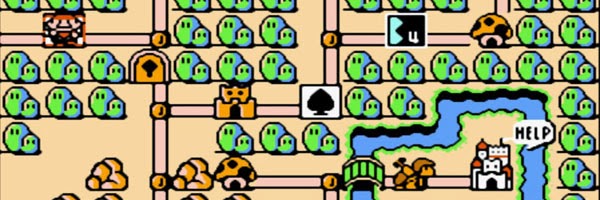OlliOlli has been on our radar for some time now but we were
never really sure how it was going to turn out. The idea of a 2D skating game
on the Vita’s small screen would seem to be a tricky thing to pull of
successfully but we’re pleased to say that roll7 seem to have accomplished it
with skill and style.
The controls of OlliOlli are simple. The left analogue stick
is used to perform tricks and jump and the X button is used to land jumps
successfully. Holding down the stick and then releasing it launches your skater
into the air, doing this at different angles or with a half circle motion produces
different spins and tricks. You can also use either shoulder button to spin you
around for further combinations.
Once in the air the aim is to land on a grindable service or
at least flat on the ground again. To grind you need to press down as you hit
the surface. Doing this at the exact right moment gives a higher score and
allows you to maintain your speed. Pressing the stick down at different angles
also allows you to land in different types of grinds. The one stick trick
system works well and allows for a surprising amount of trick variations.
Maintaining speed is all important as you need to make it to
the end of each level without bailing in order to move on to the next. A lack
of speed is likely to see you not able to jump obstacles and pits or simple
fall off the grind rail you are sailing along. If you are on the ground you can
press the X button to speed up but you’ll have to master the perfect grinds as
you won’t be spending much time on the ground in later levels as they become
one huge grind fest.
The levels themselves are a mix of tricky obstacles and opportunities
for big scores. It’s easy to say this is Tony Hawk in 2D but it does hold some
essence of the truth. The same addiction to high scores and creating perfect
runs becomes embedded in the players mind and it creates the same need to instantly
restart and do better as well. The game also draws from games such as Canabalt and
its endless running genre. The levels are not endless but you’ll need to understand
how to negotiate each obstacle along the way and falling off ends your run
dead.
There are a few issues but nothing that really stops the
trick-style madness. First of all the game has a knack of crashing when
connected to the Playstation Network. It’s far from a common occurrence but it’s
certainly frustrating when you’re in the middle of a run and it shuts down. No
doubt this will be solved fairly shortly via a handy patch. The other issue is
brought about via a combination of speed, the Vita screen and some of the level
graphics.
Sometimes it’s very difficult to see what is actually an
obstacle or rail and what are background graphics. There are also certain multi-levelled
objects where it is very difficult to tell where the grindable part of it is.
The tanks in the fourth area are particular offenders. The speed you are
normally travelling at gives you next to no time to react so when things blend
into the background it is almost always a game over situation. Once you learn
the courses this becomes less of a problem but initially it can be frustrating
to continually hit things you can barely tell are there.
Overall, OlliOlli is a ridiculously addictive game that
provides great pick up and play action. Levels are short but you may end up
losing hours without knowing it. It all works extremely well and the courses
provide great excuses to go back and get higher scores or complete challenges. OlliOlli
is an excellent Vita game and yet another example of indie creativity showing
the big boys how to do it.
Overall 8/10






